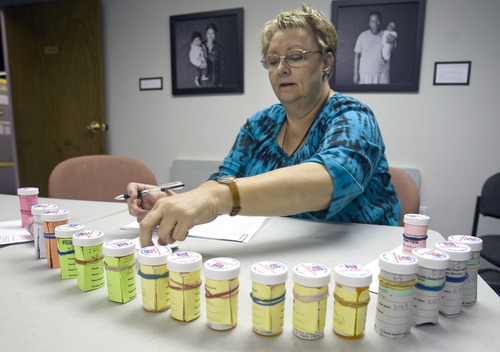This is an archived article that was published on sltrib.com in 2011, and information in the article may be outdated. It is provided only for personal research purposes and may not be reprinted.
When Noor Abdulmajeed arrived in Utah two years ago, the Iraqi refugee was shocked to discover that somewhere, at some point, she'd been exposed to tuberculosis. Although she was not contagious, there was a small chance she would get sick in the future.
"I felt scared," the 23-year-old dental hygiene student said recently. "I wanted to treat it just in case."
Now done with her course of medication, Abdulmajeed is among a growing number of Utah refugees benefiting from a new effort to encourage them to complete medical treatment for the condition known as latent tuberculosis infection.
People with latent TB who do not treat the infection have about a 10 percent chance to develop the active disease. In 2011, there have been 652 latent cases and 17 active cases so far in Salt Lake County alone. In 2010, Utah had only 20 active cases, which was the lowest number since reporting began. That statewide number is already higher this year.
Tuberculosis, a respiratory lung disease, can eat into a patient's lungs, creating cavities, making it difficult to breathe and ultimately killing them. The disease can be spread through coughing, sneezing, singing, laughing and speaking. By law, someone with active TB must receive medical treatment. Latent TB is not contagious and treatment is voluntary.
In Salt Lake County, about 50 percent of people with latent TB start the course of pills, which generally lasts six months for adults and nine months for those under 18. Of those that begin, about 80 percent finish.
But refugees, who are legal immigrants brought to the U.S. because of persecution, were not always as successful. About four years ago, only about 68 percent of the refugee clients of the International Rescue Committee, a resettlement agency, participated in treatment. Picking up the daily medication and lack of translation were among the challenges.
Nurses now come to the agency to distribute the medication two times per month and interpreters are available to assist with questions and concerns. IRC coordinates meetings with refugees and nurses about the diagnosis and provides interpreters so refugees can decide how they want to proceed.
"This is a good way of learning how the health system works and teaching them to make decisions for themselves," said Amelia Self, the health program manager at the agency.
The goal of the program — a successful collaboration between IRC and the local health department — is to empower the newcomers. In 2010, participation had jumped to 92 percent by the IRC refugees, with 80 percent of them completing the treatment. More than 250 clients have participated since 2007.
"It speaks to the refugees understanding and wanting to be healthy," said Patrick Poulin, the IRC Salt Lake City director.
In the past, some refugees would start treatment but fail to come back to the health department to pick up medication.
"Once they get a job, their priority is not with us anymore, it's putting food on the table for their family," said Tair Kiphibane, a nursing supervisor at the county health department.
Though immigrants make up the majority of people treated for the active disease in Utah, refugees are far from the largest number.
Between 2006 and 2010, Latinos made up 38 percent of residents with active TB. Twenty out of the 21 cases among black residents were African refugees or immigrants.
These days, TB is in the past for Abdulmajeed, who works as a receptionst at IRC. But she recommends that anyone with the same diagnosis take advantage of the free, accessible program. "I think they're lucky," she said.



